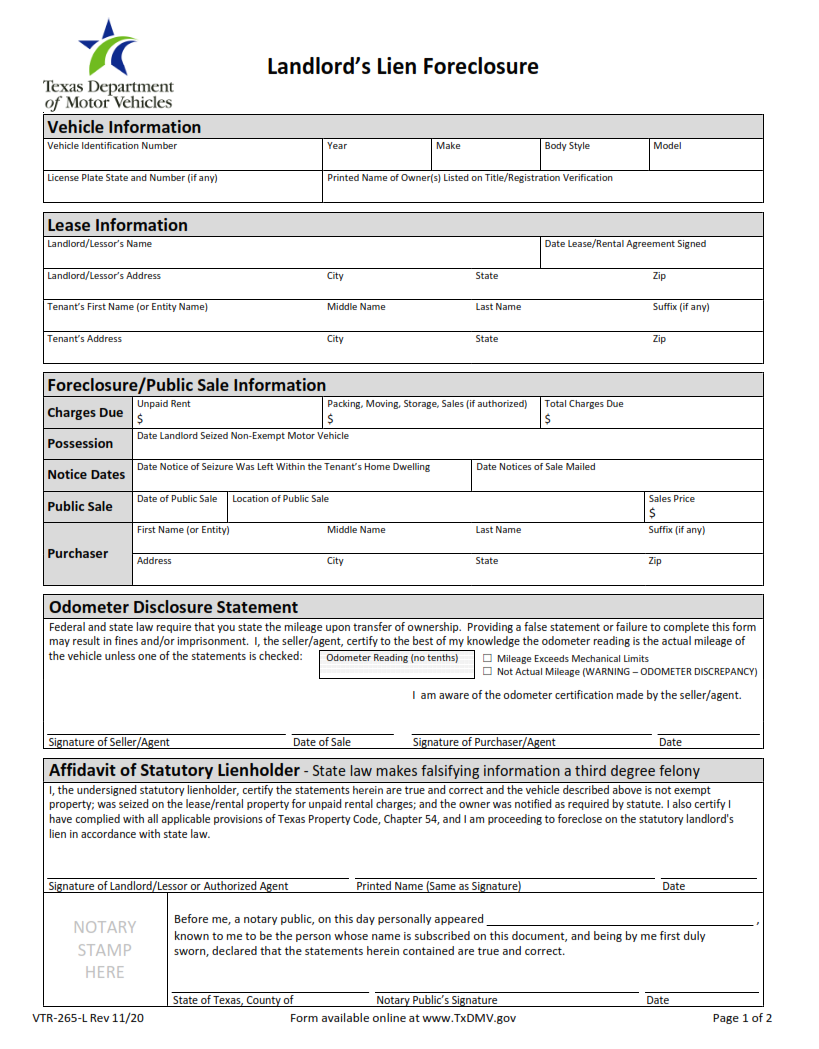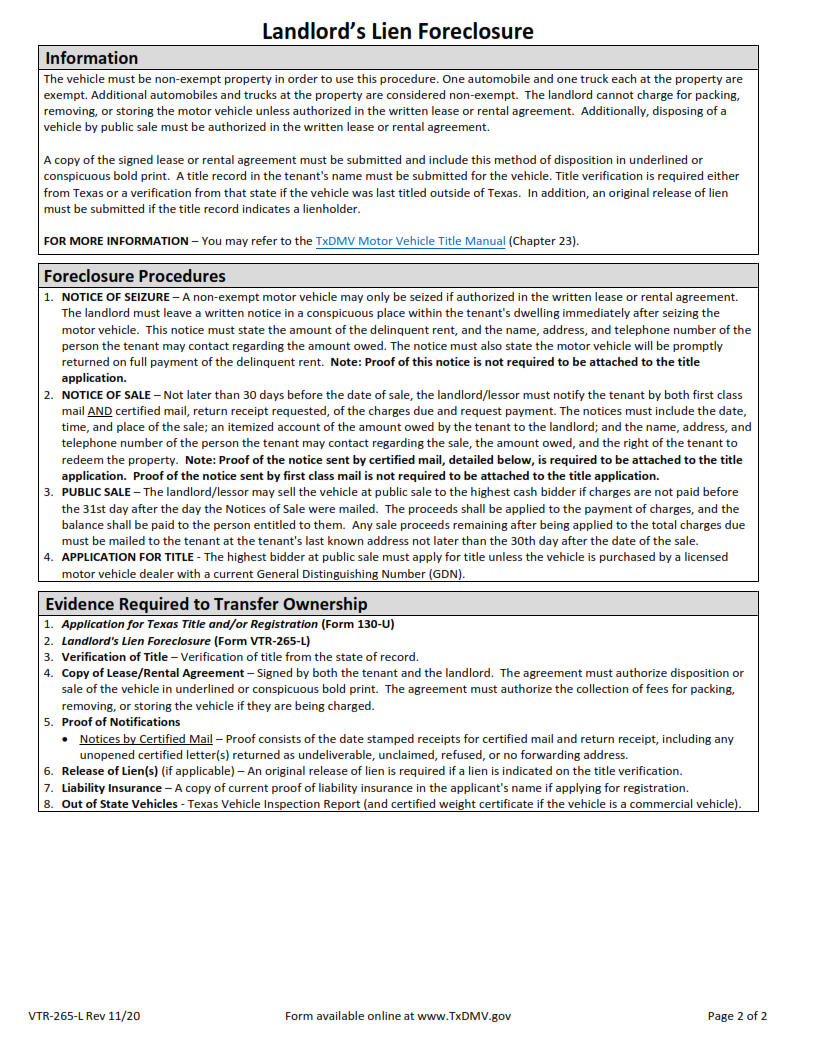ORIGINFORMSTUDIO.COM – VTR-265-L – Landlord’s Lien Foreclosure – A Landlord’s Lien Foreclosure, also known as VTR-265-L, is an important tool for landlords to use in order to protect their investments. It allows a landlord to take possession of a tenant’s property if they default on rent payments, thus securing the landlord’s investment and protecting their rights as a property owner. With this legal process, the landlord can recoup any losses due to unpaid rent or other damages that have resulted from the tenant not meeting their obligations.
Download VTR-265-L – Landlord’s Lien Foreclosure
| Form Number | VTR-265-L |
| Form Title | Landlord’s Lien Foreclosure |
| File Size | 1 MB |
| Form By | Texas DMV Form |
What is a VTR-265-L Form?
A VTR-265-L is a form issued by the Texas Department of Motor Vehicles (DMV). It is used to notify a landlord of their tenant’s failure to pay rent. The form also allows the landlord to foreclose on any liens that are secured against the tenant’s vehicle registered with the DMV.
When filling out the VTR-265-L, landlords must provide detailed information about their tenant and their rental agreement. This includes names, addresses, dates, signatures and other pertinent information. The form also asks for specific details regarding any liens that are attached to the vehicle and how much money is owed in back rent or late fees. Once completed, it must be filed with both the local county court records office as well as with the DMV itself.
What is the Purpose of the VTR-265-L Form?
The VTR-265-L form is a document that is used in the state of Texas to initiate a Landlord’s Lien Foreclosure. This form is filed with the county and allows landlords to reclaim any unpaid rent or damages from tenants that have vacated the property and left outstanding bills. This document also serves as an official notice to all involved parties, including tenants, creditors, and lienholders, regarding the foreclosure proceedings.
The exact purpose of this form is to begin a nonjudicial foreclosure process on behalf of landlords who are seeking compensation for any unpaid rents or damages caused by their tenants. By filing this document with the county clerk’s office, it provides an official record of the landlord’s request for reimbursement. The form also allows landlords to specify what amount they are requesting in rent payments or damages as well as explain why they are entitled to such compensation.
Where Can I Find a VTR-265-L Form?
If you’re looking for a VTR-265-L form, you can find it online. It’s available for free from the Texas Department of Motor Vehicles (TxDMV). The form is used to file a lien foreclosure against a landlord in Texas. The VTR-265-L allows the tenant to notify the TxDMV that they are owed money by their landlord and have not been paid in full.
The form also requires information about the landlord, such as their name, address, telephone number and email address. Additionally, it requires information about the tenant along with details on the amount of rent due and when it was due. Once completed and signed, tenants must mail or deliver the form to their local TxDMV office within 60 days of filing it. After receiving the form they will investigate and take action if necessary.
VTR-265-L – Landlord’s Lien Foreclosure
The VTR-265-L Landlord’s Lien Foreclosure is a Virginia statute that allows landlords to foreclose on their tenant’s liens. This legal action is used when a tenant fails to pay rent, and the landlord has no other recourse for collecting the money owed.
Under this law, a landlord may foreclose on their tenant’s lien by filing a complaint in Circuit Court or General District Court. The court will then issue an Order of Sale which will set the date of sale and any associated conditions. The proceeds from the sale are applied first to satisfy any outstanding debts owed to the landlord and then divided amongst all creditors according to priority.
If successful, foreclosure through VTR-265-L can help landlords receive repayment of debts they are due without having to wait long periods of time or engage in lengthy legal procedures.
VTR-265-L Form Example

